
Humboldt County is a county located in the U.S. state of California. As of the 2020 census, the population was 136,463. The county seat is Eureka.

Arcata is a city adjacent to the Arcata Bay (northern) portion of Humboldt Bay in Humboldt County, California, United States. At the 2020 census, Arcata's population was 18,857. Arcata was first founded in 1850 as Union, was officially established in 1858, and was renamed Arcata in 1860. It is located 280 miles (450 km) north of San Francisco, and is home to California State Polytechnic University, Humboldt. Arcata is also the location of the Arcata Field Office of the Federal Bureau of Land Management, which is responsible for the administration of natural resources, lands and mineral programs, including the Headwaters Forest, on approximately 200,000 acres (810 km2) of public land in Northwestern California.
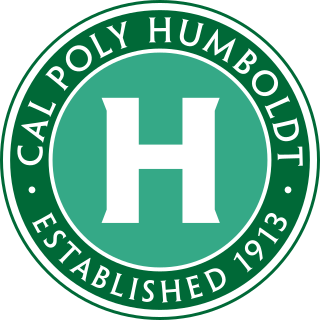
California State Polytechnic University, Humboldt is a public university in Arcata, California. It is one of three polytechnic universities in the California State University (CSU) system and the northernmost campus in the system.
The Oregon Museum of Science and Industry is a science and technology museum in Portland, Oregon, United States. It contains three auditoriums, including a large-screen theatre, planetarium, and exhibition halls with a variety of hands-on permanent exhibits focused on natural sciences, industry, and technology. Transient exhibits span a wider range of disciplines.

The National Museum of Natural History (NMNH) is a natural history museum administered by the Smithsonian Institution, located on the National Mall in Washington, D.C., United States. It has free admission and is open 364 days a year. With 4.4 million visitors in 2023, it was the second most-visited museum in the United States.

The Burke Museum of Natural History and Culture is a natural history museum on the campus of the University of Washington, in Seattle, Washington, United States. It is administered by the UW College of Arts and Sciences. Established in 1899 as the Washington State Museum, the museum traces its origins to a high school naturalist club formed in 1879. The museum is the oldest in Washington state and boasts a collection of more than 16 million artifacts, including the world's largest collection of spread bird wings. The Burke Museum is the official state museum of Washington.
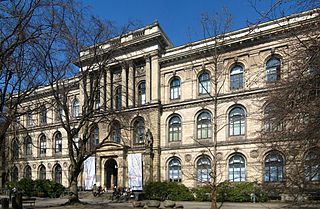
The Natural History Museum is a natural history museum located in Berlin, Germany. It exhibits a vast range of specimens from various segments of natural history and in such domain it is one of three major museums in Germany alongside Naturmuseum Senckenberg in Frankfurt and Museum Koenig in Bonn.

The Natural History Museum of Los Angeles County is the largest natural and historical museum in the western United States. Its collections include nearly 35 million specimens and artifacts and cover 4.5 billion years of history. This large collection comprises not only of specimens for exhibition, but also vast research collections housed on and offsite.
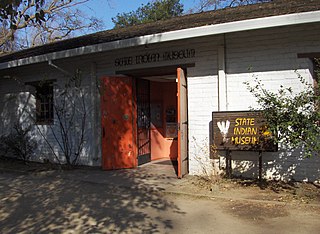
The California State Indian Museum is a museum in the state park system of California, United States, interpreting the diverse cultures of the indigenous peoples of California. It is located in Midtown Sacramento at 2618 K Street. The museum exhibits traditional items illustrating the varying cultures of the state's first inhabitants. The native population of California, one of the largest and most diverse in the Western hemisphere, was made up of over 150 distinct tribal groups who spoke at least 64 different languages. Prior to the arrival of the first European explorers, the native population is estimated to have been in excess of 500,000 people.

The Mad River is a river in upper Northern California. It flows for 113 miles (182 km) in a roughly northwest direction through Trinity County and then Humboldt County, draining a 497-square-mile (1,290 km2) watershed into the Pacific Ocean north of the town of Arcata near [California Redwood Coast-Humboldt County Airport] in McKinleyville. The river's headwaters are in the Coast Range near South Kelsey Ridge.
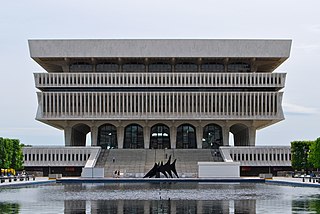
The New York State Museum is a research-backed institution in Albany, New York, United States. It is located on Madison Avenue, attached to the south side of the Empire State Plaza, facing onto the plaza and towards the New York State Capitol. The museum houses art, artifacts, and ecofacts that reflect New York’s cultural, natural, and geological development. Operated by the New York State Education Department's Office of Cultural Education, it is the oldest and largest state museum in the US. Formerly located in the State Education Building, the museum now occupies the first four floors of the Cultural Education Center, a ten-story, 1,500,000-square-foot (140,000 m2) building that also houses the New York State Archives and New York State Library.

The San Diego Natural History Museum is a museum located in Balboa Park in San Diego, California. It was founded in 1874 as the San Diego Society of Natural History. It is the second oldest scientific institution west of the Mississippi and the oldest in Southern California. The present location of the museum was dedicated on January 14, 1933. A major addition to the museum was dedicated in April 2001, doubling exhibit space.

Redwood Bowl is a collegiate athletic stadium on the west coast of the United States, on the campus of Humboldt State University in Arcata, California. It is used for Humboldt State Lumberjacks football games and track and field meets, as well as local high school contests. Construction began in the late 1930s as part of a Work Projects Administration (WPA) grant.

Maynard Dixon was an American artist. He was known for his paintings, and his body of work focused on the American West. Dixon is considered one of the finest artists having dedicated most of their art to the U.S. Southwestern cultures and landscapes at the end of the 19th-century and the first half of the 20th-century. He was often called "The Last Cowboy in San Francisco."

The Bernardino Rivadavia Natural Sciences Argentine Museum is a public museum located in the Caballito neighborhood of Buenos Aires, Argentina.

King Salmon is an unincorporated community in Humboldt County, California, United States, located on the shore of Buhne Point directly across from the entrance to Humboldt Bay, slightly south of Eureka and 1 mile (1.6 km) north of Fields Landing, at an elevation of 3 feet (0.91 m). It has a Eureka zipcode and area code and is part of Greater Eureka although outside the city limits.

The nonprofit Ferndale Museum, located in Ferndale, California, houses and exhibits artifacts, documents and papers from settlement during the California Gold Rush to the present including an active Bosch-Omori seismograph. The area of collection covers the lower Eel River Valley as far south as the Mattole River Valley and west to the Pacific Ocean. Collections include over 8,000 photographs, back issues of the Ferndale Enterprise newspaper, and family papers spanning 150 years.
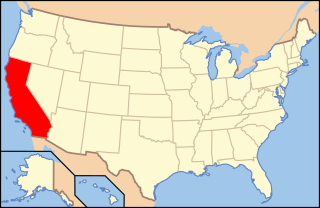
Paleontology in California refers to paleontologist research occurring within or conducted by people from the U.S. state of California. California contains rocks of almost every age from the Precambrian to the Recent.
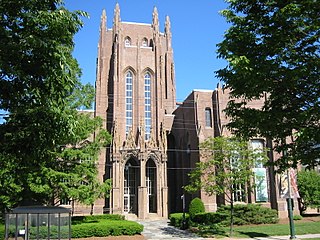
The Peabody Museum of Natural History at Yale University is one of the oldest, largest, and most prolific university natural history museums in the world. It was founded by the philanthropist George Peabody in 1866 at the behest of his nephew Othniel Charles Marsh, an early paleontologist. The museum is best known for the Great Hall of Dinosaurs, which includes a mounted juvenile Brontosaurus and the 110-foot-long (34 m) mural The Age of Reptiles. The museum also has permanent exhibits dedicated to human and mammal evolution; wildlife dioramas; Egyptian artifacts; local birds and minerals; and Native Americans of Connecticut.



















